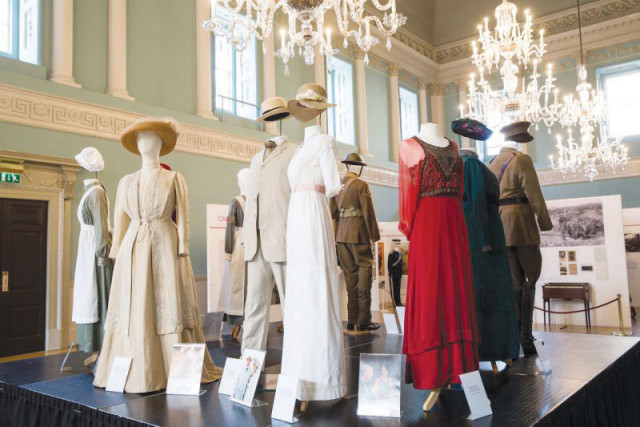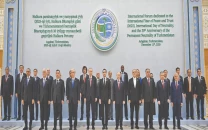When the bombshells took charge
The Great War may have tainted history, but it turned out to be great for female fashion.

As 2014 marks hundred years since the outbreak of World War I (WWI), the world takes a retrospective glance at what it leaves behind other than a tainted history through exhibitions and commemorative events. What came to be known as The Great War, became a harrowing tipping point in the realm of warfare, but also, inadvertently, made a major impact on the world of fashion. Interesting? We think so too.
From Britain to New Zealand, exhibits are showcasing how the war influenced women’s clothing, from raising hemlines to new utility wear worn ladies at home, reported the Daily Beast. Paving the way for androgyny, the war even led women to turn to their husbands’ closets to dress themselves for their new jobs on the home front.
“As the men left for war, women took on what were previously male-dominated roles such as farm or factory work,” said Doris de Pont, curator of ‘The Way We Wore — In Service and On The Street’, an exhibition that opened at the online New Zealand Fashion Museum on Tuesday. “The physicality of the work meant that traditional women’s attire wasn’t appropriate. Women raided men’s wardrobes and altered shirts and trousers to fit.”

Hemlines rose during wartime and fell again when the war neared its end. PHOTOS: FILE
The Bath Fashion Museum is presently displaying nearly two-dozen wartime costumes, which include a dozen looks from Downton Abbey, a television series set in WWI. The exhibition comprises uniforms and civilian dresses along with propaganda items, which show how in the wake of the war, women opted for wearing trousers. “WWI changed women’s fashion; corsetry was softened and clothing became more practical,” said Yvonne Hellin-Hobbs, the exhibition’s organiser.
The New Zealand exhibition displays photographs, which show “how real people dressed and interacted at the time, and the impact of the war on our sartorial style,” according to De Pont. The impact of WWI and World War II is evident both in the practical construction of garments and the creative use of limited materials available.
Bearing in mind the prevalent rationing in those days, De Pont was interested in viewing “how restrictions in materials manifested themselves in creative and thrifty ideas for civilian dress as well as uniforms.” Hemlines rose during wartime and fell again when the war neared its end.
Pre-war New Zealand was thriving and latest fashions from London and Paris were all the rage among women. But after being hit hard by the war, New Zealanders faced losses of epic proportions and they were reflective in fashion. “Ostentatious dress was considered inappropriate even where people had the means. Sober and muted colours including shades of grey, one described in a local paper as ‘Battleship’, were prevalent. Jewellery and other showy decorative elements were put aside,” De Pont explained.

But the war also helped in modernising women’s dress. “Women gained a great deal of freedom during wartime. Many young women were reluctant to pull back from an active life outside the home and demure to the constraints of domesticity and corseted fashions,” added De Pont.
In the immediate post-war period, the unstructured gamine look surfaced, promoting freedom and action. Vibrant hues were used in textile and beading and embroidery. The world became fashionable again. Paris was no longer the only fashion haven. Owing to communication issues with France during the war, New York rose to become the hub of fashion with its practical and feminine approach to apparel.
The war left an indelible mark on designer preferences, with some collections of today still translating its fashion on the runway. New York-based designer Thom Browne’s menswear collection held in June in Paris showcased what seemed to be rows of WWI soldiers in grey uniforms, sitting with plasters over their eyes. His latest designs were displayed amid this backdrop in what was a rare runway reference to a 100-year-old WWI.
Published in The Express Tribune, July 24th, 2014.
Like Life & Style on Facebook, follow @ETLifeandStyle on Twitter for the latest in fashion, gossip and entertainment.



















COMMENTS
Comments are moderated and generally will be posted if they are on-topic and not abusive.
For more information, please see our Comments FAQ